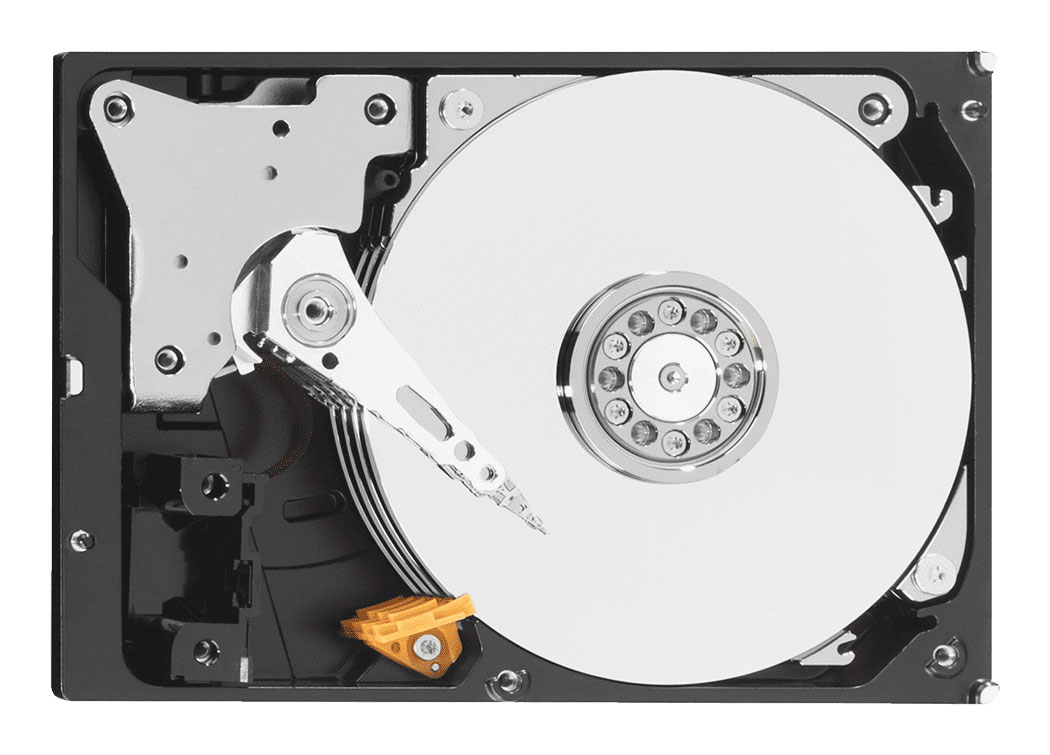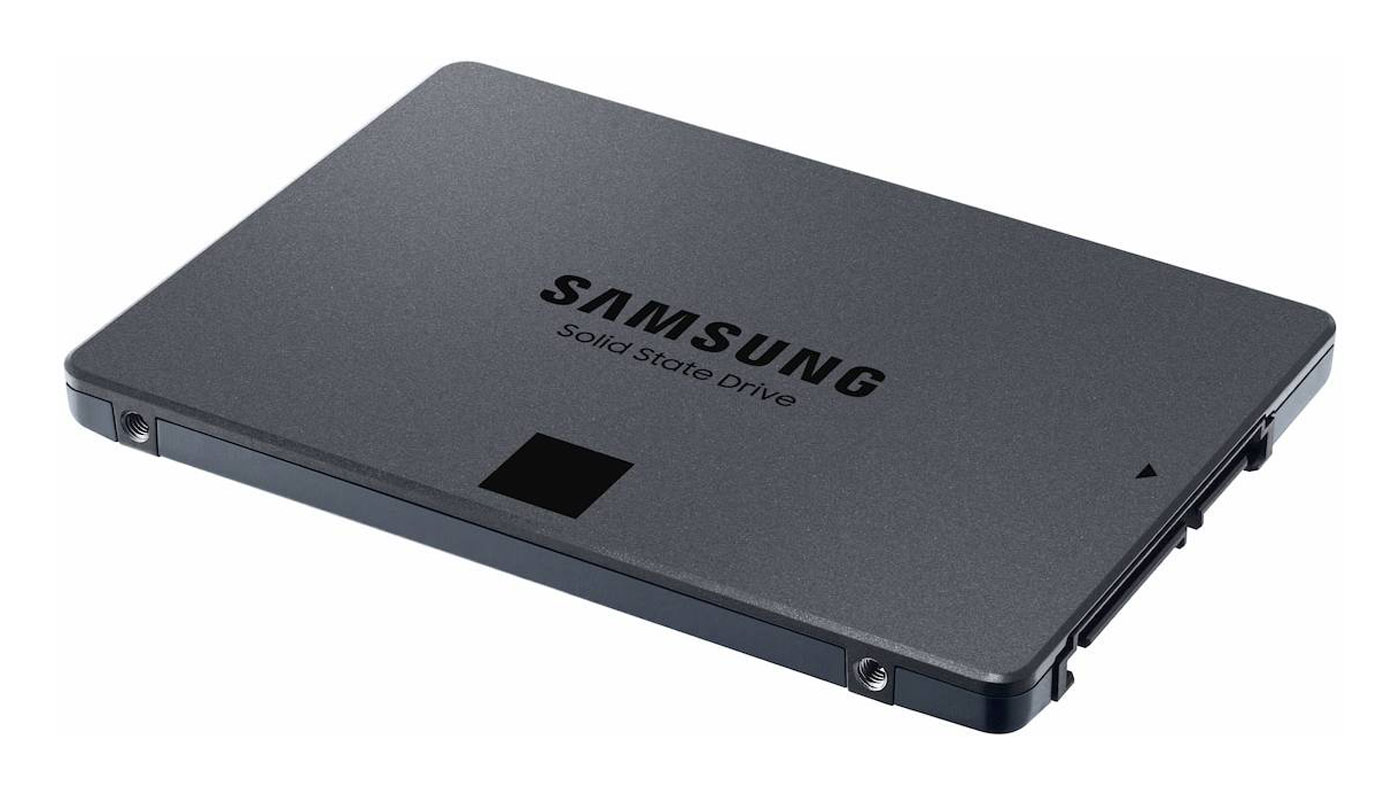Twenty years ago, the world of music production was dominated by romplers like the Roland JV-1080 and Yamaha MOTIF. The MOTIF Classic, which was originally released in 2001, had only 84 MB of onboard waveform ROM (read-only memory). Fast forward to 2020, the music production landscape has changed dramatically. Spectrasonics Omnisphere, a popular sample library among pop producers and film composers, weighs in at over 60 GB – that’s ~715x the size of the MOTIF’s onboard memory.
As modern sample libraries grow bigger, the capacity and performance requirements for our storage devices increase as well. In this post, we’ll discuss SSDs and HDDs for music production, and which one you should choose.
The Difference Between SSDs and HDDs
SSDs (solid state drives) and HDDs (hard disk drives) are both storage devices for your computer, but the similarities end there. For a long time, computers used HDDs, which rely on a mechanical spinning disk to store data. SSDs, which hit mainstream computing devices in the late 2000s, ditch the mechanical components of HDDS, and instead store data on flash memory – similar to USB flash drives and SD cards, but much faster.

A mechanical hard drive. Notice the moving parts.
Now that we’ve gone over how HDDs work, you may be wondering how necessary using SSDs is for music production. On average, SSDs perform 4-5x faster than their mechanical counterparts! The difference in speed between SSDs and HDDs mainly boils down to the bottleneck of mechanical parts. The lack of mechanical parts in SSDs also make them more reliable and less prone to breaking from an accidental drop. With speed and reliability come an increase in price as well. On average, HDDs go for $0.045/GB, while SSDs are priced much higher at $0.16/GB.

A <a href="https://brianli.com/the-best-external-ssds-for-music-production/#samsung-870-qvo-ssd">Samsung 870 QVO SSD</a> with no moving parts.
Choosing Between SSDs and HDDs
I haven’t come across a single reason why HDDs are better than SSDs for music production in 2020. A decade ago, SSDs failed to match the storage capacity of HDDs, which was a real problem for music producers with large sample libraries. Today, that is no longer the case – Samsung’s 870 QVO SSD is available in capacities up to 4 TB, which is plenty large for even the most demanding sample libraries.
If price is your primary concern. keep in mind that SSDs typically last much longer than HDDs due to their lack of mechanical parts. Dropping a HDD on the ground once can be enough to render it unusable. The same can’t be said for SSDs – I don’t recommend dropping them, but chances are they will continue working fine after a 5-6 foot drop.

Spectrasonics Omnisphere 2 has over 61 GB of samples.
As time goes on, sample libraries are only going to larger and larger. More velocity layers will be recorded, higher sample rates will be used, and more round robin variations will be captured to create more realistic-sounding virtual instruments. At the end of the day, large sample libraries require a large amount of storage bandwidth. A 7200 RPM HDD that transfers data at 80-160 MB/s is not going to cut it. You’ll be much happier with modern SSDs, which have a theoretical top speed of 3,500 MB/s.
In 2020, SSDs are no longer a luxury computing accessory. There’s no reason to limit your creative potential with HDDs. For music production, SSDs are undoubtedly better than HDDs.
SSD Recommendations for Music Production
Now that we’ve established that SDDs are better than HDDs for music production, let’s go over a few SSD recommendations.
Samsung 970 EVO Plus
The Samsung 970 EVO Plus SSD is the latest in consumer SSD technology. It uses a high-speed connection called NVME, and allows for theoretical transfer rates up to 3,500 MB/s. In practice, you can expect to see speeds up 700 MB/s with today’s consumer-level USB 3 connections.
Samsung T7 Portable SSD
The Samsung T7 is a high-performance portable SSD that supports USB 3.2 Gen2. Unlike the 970 EVO and 870 QVO, the T7 ships with a shock-resistant enclosure. If you prefer convenience over customizability, the T7 is the best option out there.
Samsung 870 EVO SSD
The Samsung 870 QVO SSD is one of Samsung’s most popular drives. Unlike the NVME-powered 970 series, the 870 series uses more traditional flash memory. This means the 870 QVO is cheaper per gigabyte than the 970 EVO Plus, and it’s also available in capacities up to 8 TB.
Glyph Atom
The Samsung 970 and 870 series are “raw drives”. In other words, they’ll require some sort of connector (USB or Thunderbolt) to interface with your computer. The Glyph Atom is a “finished product” – it’s an NVME SSD that ships in a nice aluminum enclosure with USB-C support.
To learn more about the Samsung 970 EVO Plus, Samsung 870 QVO, and Glyph Atom, check out this in-depth post that discusses the pros and cons of each SSD.
Conclusion
For modern music producers, SSDs are a much better choice than HDDs. SSDs offer significantly better performance and reliability. Practically speaking, that means you’ll experience less loading time (a creativity killer), clicks and pops, and stress in the music production process.